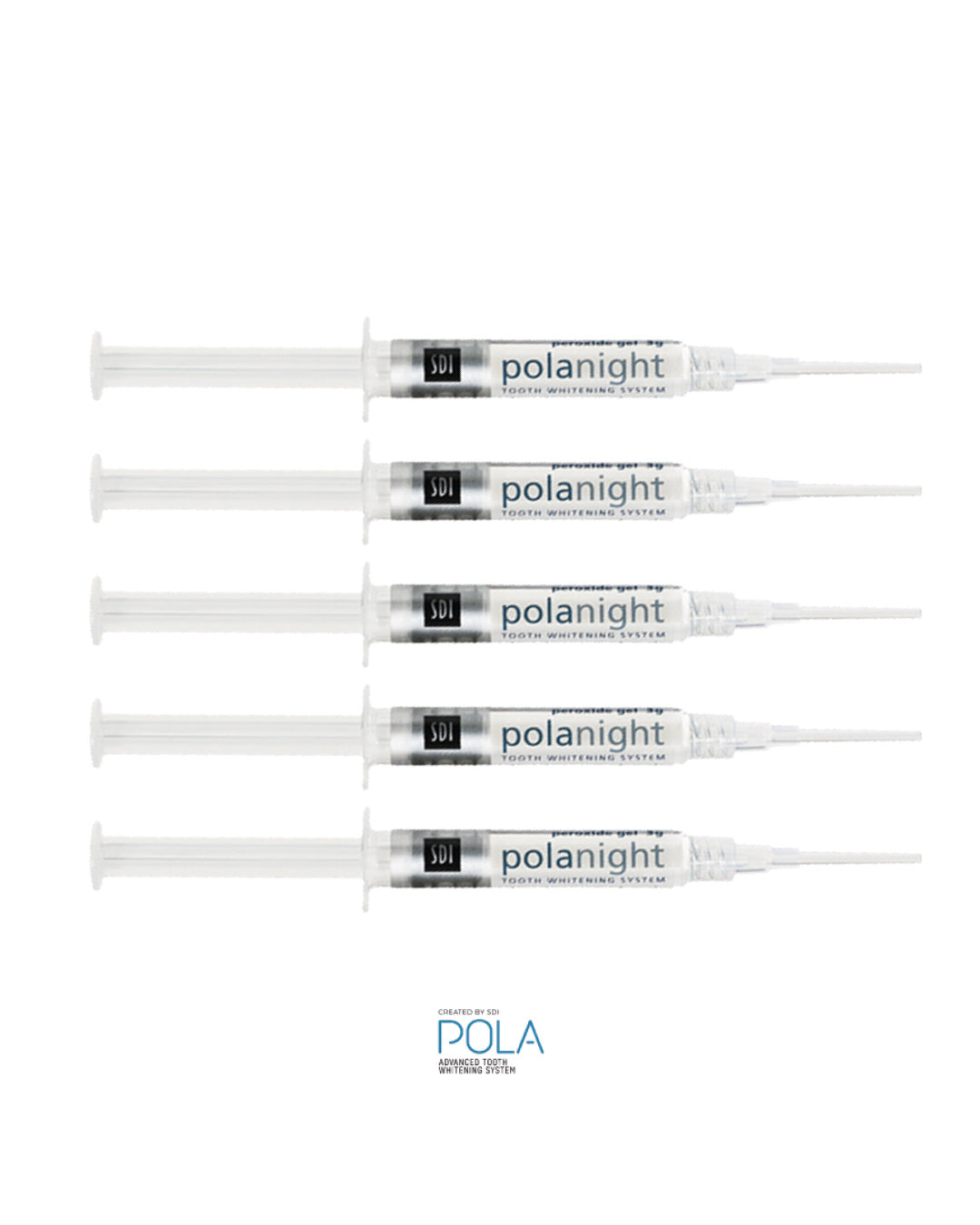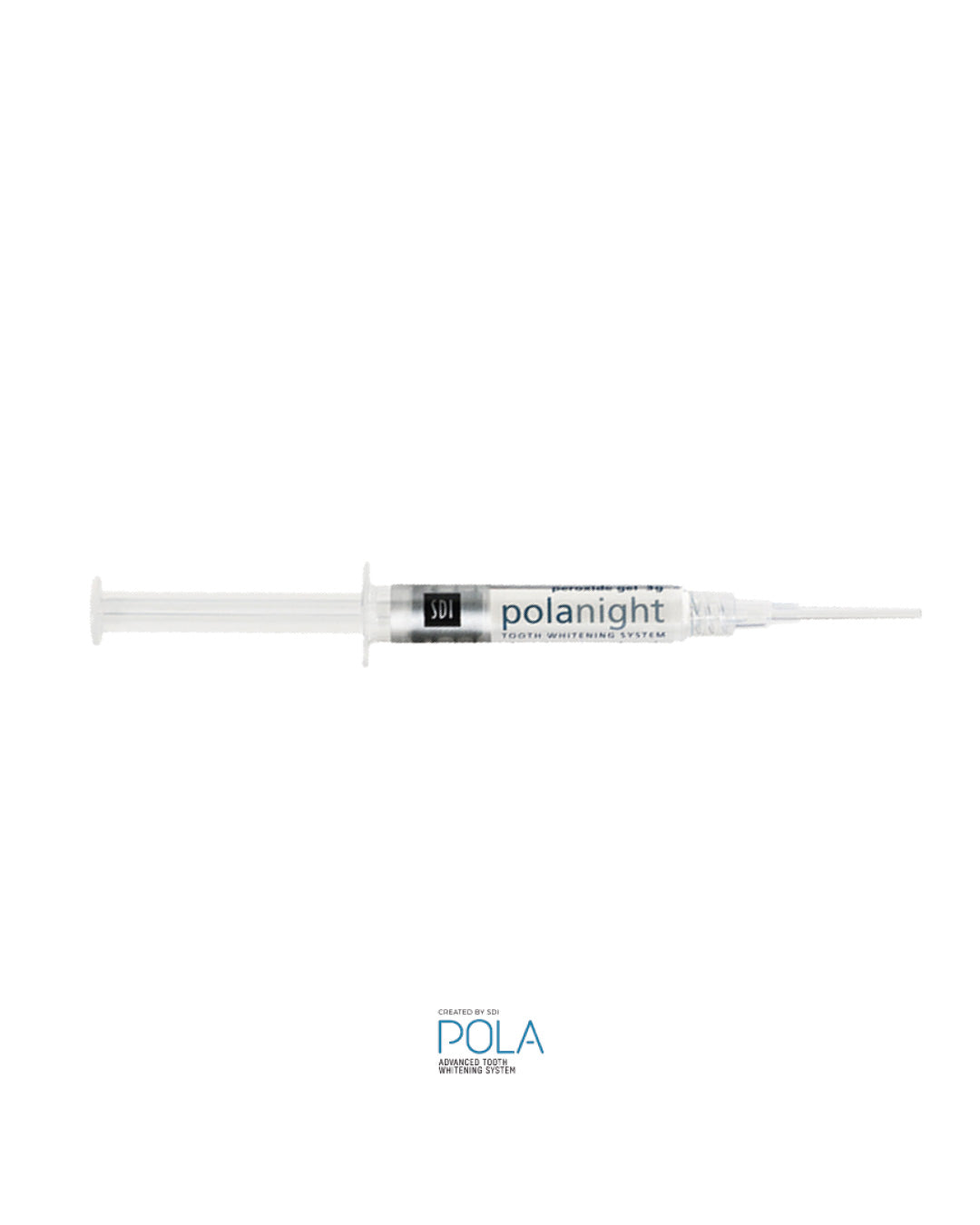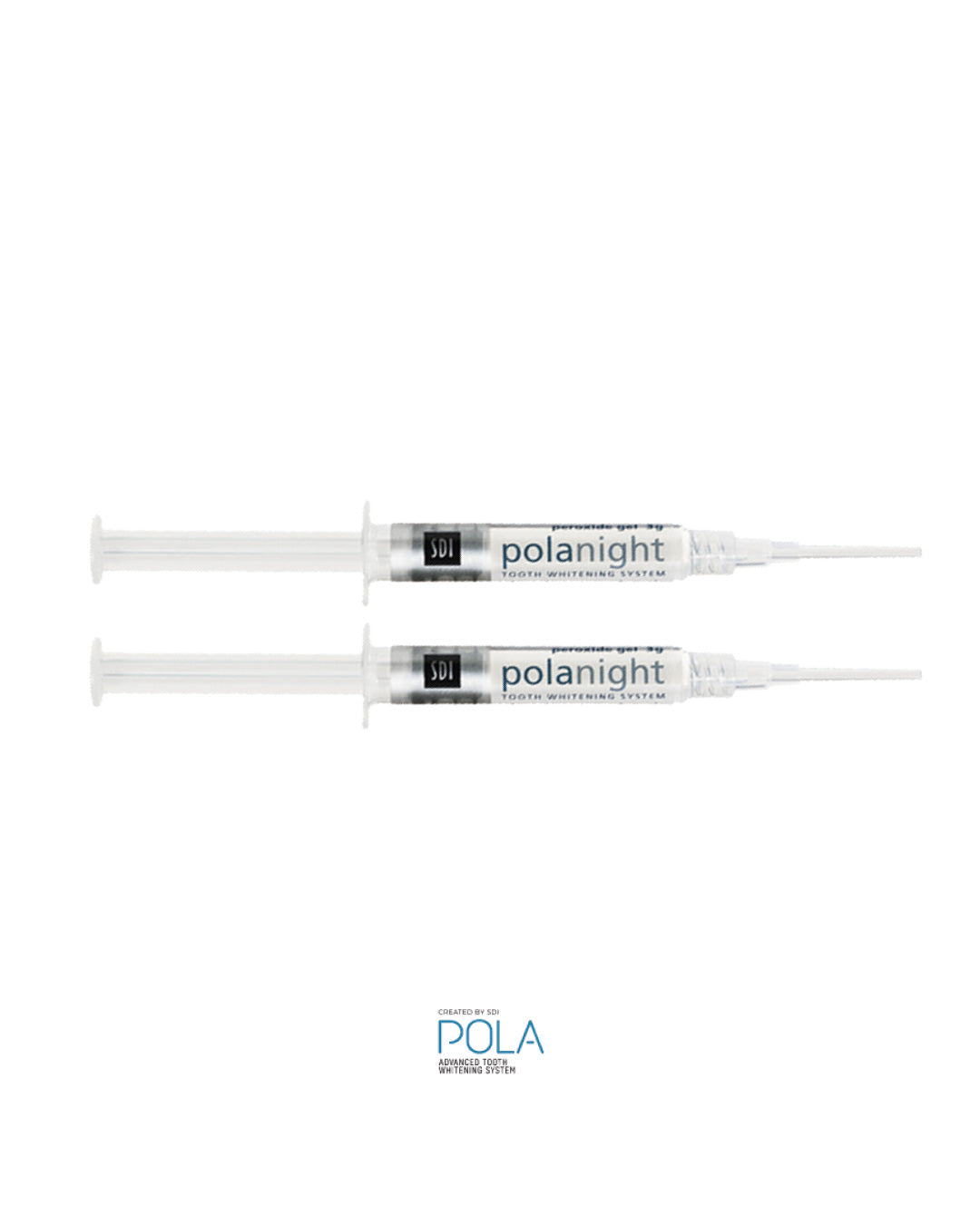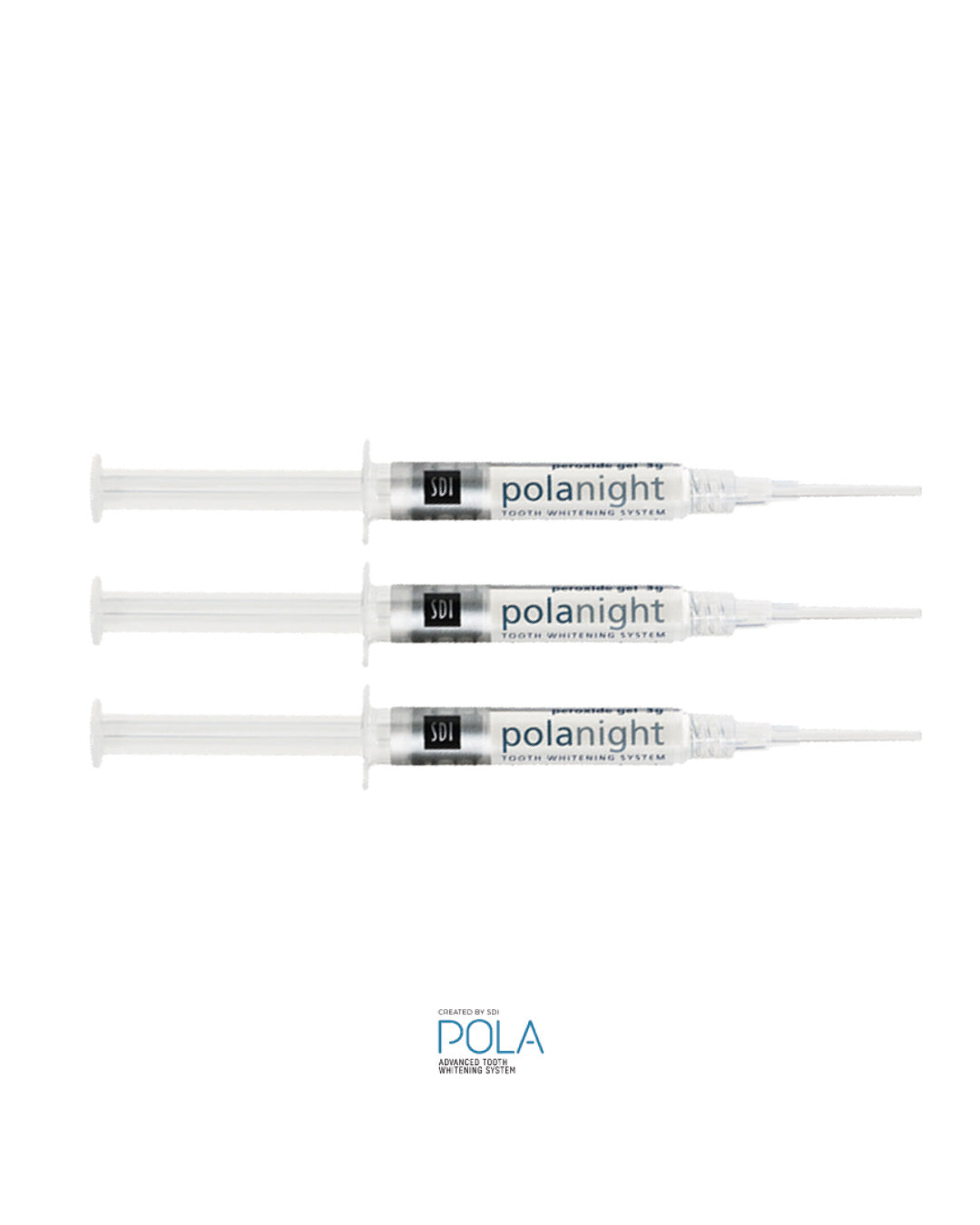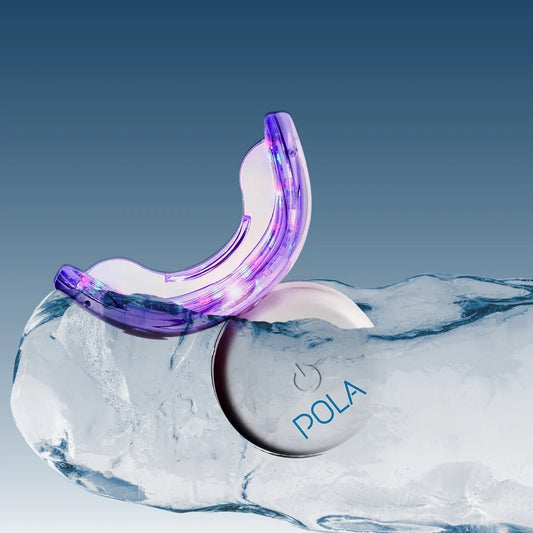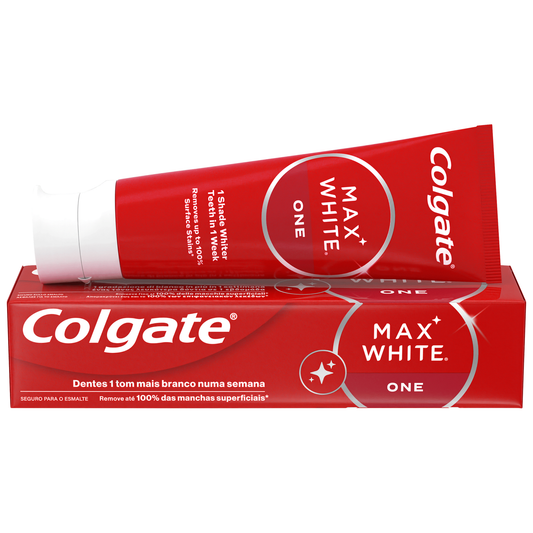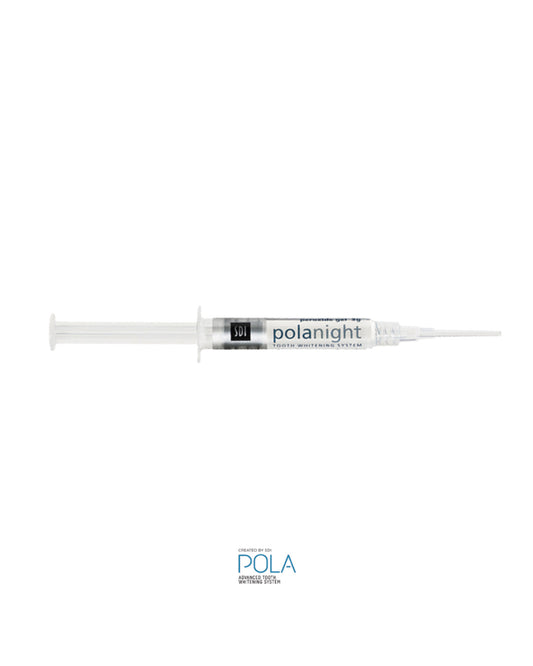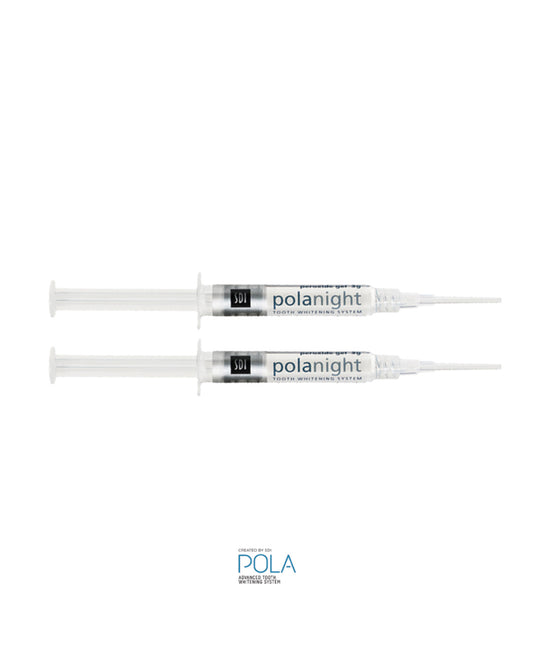Pola Night 16%: how long does it take to see visible results?

For many, a smile is one of the greatest expressions of self-esteem and personal confidence. One of the most discussed and sought-after products in the world of teeth whitening is Pola Night 16%. Developed for home use, this nighttime gel is a solution for those looking for whiter teeth without compromising patient comfort and avoiding the discomfort and limitations of in-office techniques.
But does Pola Night 16%, which is remarkably a pH-neutral gel, deliver what it promises? And, most importantly, how long can it take to see visible results? Throughout this article, I will reveal the answers to these questions, always with a close eye on science and practical experience.
What is Pola Night 16% ?
Pola Night 16% is a 16% carbamide teeth whitening gel manufactured by SDI Limited. It is applied at home, usually while sleeping, using custom-made mouthguards. This percentage was chosen because it provides a good balance between efficacy and safety, and is less aggressive to the enamel and gums than higher concentrations.
In today's article, we focus on Pola Night 16%, as this concentration is often recommended by professionals for consistent and controlled results.
How does Pola Night 16% work?
Its active ingredient, carbamide peroxide, breaks down into hydrogen peroxide and urea. Hydrogen peroxide is responsible for oxidizing stains, penetrating the enamel and dentin, breaking down the pigmentation-causing molecules.
This process does not remove any part of the tooth, but rather temporarily changes the color of the pigments. However, temporary sensitivity may occur due to the effect on the tooth's nerve.
What is the suggested application routine?
Most dentists recommend applying Pola Night 16% in a custom-made mouthguard for about 2 to 4 hours per night, even though the name suggests it should only be used during sleep.
Usual steps:
- Brush your teeth thoroughly before beginning.
- Apply a small amount of gel to the drip, avoiding excess.
- Place the splint in your mouth, making sure it fits snugly.
- Leave to act for the recommended period (usually between 2 and 4 hours).
- Remove the splint, rinse your mouth with water and clean the splint with cold water.
The procedure is repeated daily, during the cycle prescribed by the professional (which can vary from 5 to 14 days, depending on the case).
When do visible results start to appear?
One of the most frequently asked questions is how quickly changes in teeth can be noticed. Happiness for many: most report subtle changes within just 2 or 3 nights of use.
However, individual factors such as the degree of pigmentation, eating habits, age and, above all, discipline in application, influence the times.
According to clinical reports and controlled studies, in general:
| Usage Time | Change in hue |
|---|---|
| 1-3 nights | Slight difference, especially in surface stains |
| 4-7 nights | Increasing whiteness, more uniform and visually distinct teeth |
| 8-14 nights | The results are close to maximum, teeth noticeably whiter |
This table shows that, for those seeking rapid changes, this method is one of the most effective options. Individual response, however, should never be underestimated.
What can affect the results?
Not everyone has the same response pattern to teeth whitening. Below are some decisive factors:
- Type of stains : Yellow stains caused by food or tobacco respond better than gray or genetic stains.
- Age : Younger teeth tend to respond better.
- Food : Pigmented foods (coffee, red wine, tea) can delay or compromise results.
- Smoking : Smoking negatively affects whitening and its durability.
- Oral hygiene : Consistent care accelerates and maintains results.
Last but not least, the maximum recommended time interval must be respected. More is not always better, and overuse can betray expectations by causing intense sensitivity.
Tooth sensitivity: a common side effect
One of the biggest concerns is patient comfort during treatment. It is estimated that 30% to 60% of teeth whitening users experience temporary sensitivity.
This usually manifests as a sharp sensation when exposed to cold, or small “shocks” when chewing. In the vast majority of cases, this sensitivity disappears spontaneously a few days after completing treatment.
To mitigate this effect, many professionals suggest:
- Alternating nights: Use the gel every other day.
- Desensitizing toothpaste, starting a few days before whitening.
- Reduction of contact time, in case of marked discomfort.
Realistic expectations
Pola Night 16% does not replace dental cleaning nor does it work on fillings, crowns or veneers. Only natural teeth change color, which is why any discrepancy with pre-existing restorative pieces will become more noticeable.
Teeth that are excessively stained by antibiotics (e.g. tetracyclines) or trauma have less predictable results. Professional advice is essential in these situations to avoid frustration.
Tips for maintaining whitening results
Post-treatment care largely determines how long the new shade of your teeth lasts. Today we know that with a basic routine, the effects can last between six months and two years.
Here are some practical recommendations:
- Impeccable oral hygiene, including daily use of dental floss.
- Restrict the consumption of pigmented foods and drinks, at least during the first 48 hours after each application.
- Avoid smoking or chewing tobacco.
- Regular visits to the dentist for cleanings and check-ups.
Important: do not overuse whitening treatments in very short cycles. Overuse can cause irreversible damage to the enamel.
When to opt for Pola Night 16%?
This gel offers an alternative for those who prefer home control, with fewer visits to the office and more flexible hours.
Although it is considered a safe solution, it does not replace clinical evaluation, which is essential to rule out contraindications such as untreated cavities, gingivitis or severe enamel wear.
If you are looking for effective results without compromising your oral health, always talk to your dentist first. Together you can define the ideal protocol, adapted to your needs and expectations.
Frequently Asked Questions (FAQ)
1. Is it safe to use Pola Night 16% on sensitive teeth? Yes, but under supervision and with adapted protocols. The use of desensitizing products and breaks in treatment are common strategies.
2. Can I eat normally after application? During the first few hours after each session, it is recommended to avoid foods or drinks with coloring. The "white diet" can be a good option, based on foods with little pigmentation, such as rice, chicken, milk and potatoes.
3. Am I a candidate for whitening if I have old fillings? Bleaching does not change the color of restorative materials. Your dentist may suggest replacing the materials after the color of your natural teeth has stabilized.
4. Can I reuse the gel left over in the syringe? As long as it is stored as instructed (in a cool place away from light), the gel can be kept for several months.
5. Is the treatment compatible with orthodontic appliances? Whitening should only be carried out after the device has been removed, to ensure uniform results.
How to measure the success of whitening?
The success of whitening depends, above all, on user satisfaction and patient comfort. For some people, small changes can have a huge impact on self-esteem. The photographic documentation phase (before and after) can help to highlight the progress, making the process more motivating.
Collaboration with the dentist, discipline in application and respect for subsequent care are crucial for a long-lasting and safe result.
For those who want whiter teeth in a predictable and personalized way, Pola Night 16% represents a modern, adaptable and proven solution, with benefits visible in just a few days and lasting over time when combined with healthy habits.



